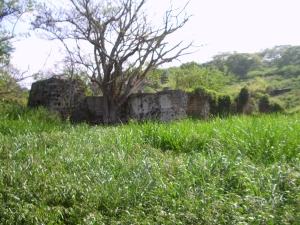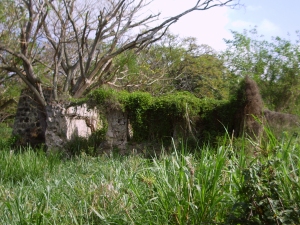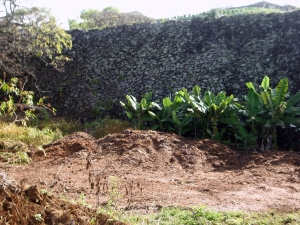By Donald B. MacGowan and Frank Burgess
The Sugar Industry in Hawaii
Scattered across the Hawaii Island landscape are remnants of old sugar mills, fields and even some feral cane can still be seen. But when Captain Cook came to the Islands in 1778, only wild sugar cane grew.

- Feral Sugar Cane Field, Hamakua, Hawaii: Photo by Donnie MacGowan
The climate in Hawaii offered a perfect environment for raising sugar cane; cooling ocean currents keep the average temperatures around 80 degrees, with frequent rains, abundant groundwater and year round sunshine.
In 1834 the first successful sugar plantation company marked the beginning of Hawaii's love affair with sugar. Sugar provided Hawaii an economic foundation allowing a cosmopolitan society to flourish which spurred U.S. Annexation and eventual statehood in 1959.
In its heyday during the early 1960s, one out of every twelve people employed in Hawaii was in the sugar industry whose workers were the highest paid in the world. Hawaii produced a million tons of cane sugar a year from about 221,000 acres of land on four islands. Hand milling of cane was replaced by mechanical milling in the late 1800s.These mills easily handled a number of processes including washing, crushing, grinding, and centrifuging. Raw, milled sugar was then shipped to the California & Hawaiian Sugar Refining Corporation in Crockett, California. Unable to compete in the global sugar market the Hawaiian sugar industry declined in the 1980s and the last plantation closed at Pahala in 1992.
Though the business is gone, what is left are the people who once worked the fields and mills. The melding of the rich cultures of Japanese, Chinese, Filipinos, Portuguese, and others is what gives today's unique Hawaii lifestyle its flavor.
Kona Sugar Company and West Hawai’i Railway Company
Such was the seductive lure of easy riches to be gained by growing sugar in Hawai’i at the beginning of the 20th Century, that investment capital for a large sugar plantation, sugar mill and railroad in Kona could be raised not once, but three times.

The Kona Sugar Company plantation was established in 1899 and every available scrap of land was stripped of whatever crops had grown there previously and planted in cane. Although the sugar grew well enough about 500 feet elevation, a notable lack of fresh water in Kona’s semi-arid landscape made Wai’aha Stream the only logical choice for the mill site. Unfortunately, the stream flow is vastly insufficient for year-round cane milling and the mill, built in 1901, went broke in 1903.
Kona Sugar was bought by investors; renamed Kona Development Company, the plantation again went broke in 1916 and was in turn bought by investors in Tokyo. This group managed to eek out a profit until the industry imploded in 1926. Originally planned to run 30 miles, the railroad was only built to total length of 11 miles in the 27 years of sugar plantation operation. Work camps, communal baths, stables, workshops and all the requisite infrastructure of a giant agricultural plantation lay abandoned in the Mauka Kona countryside.
During World War II, the U.S. Army used the mill site as a training camp to acclimate troops to warfare on their way to the tropical Pacific Theater. Fearing the tall smokestack of the mill would act as an artillery landmark for any invading forces, the Army pulled it down and Kona lost one of its first post-contact, industrial landmarks.

Traces of the rail bed can still be seen from the top of Nani Kailua and Aloha Kona residential neighborhoods. Located along Hualalai Road, near the intersection with Hienaloli Road, are impressive stone breastworks and trestles for the railroad. Built by hand but still strong today, the rail bed can be explored and hiked from here. Further up Hienaloli Road from the intersection with Hualalai Road, the old mill site remnants are still visible.

For more information on traveling to Hawaii in general and touring the Big Island in particular, please also visit www.tourguidehawaii.com andwww.tourguidehawaii.blogspot.com.
All media copyright 2009 by Donald B. MacGowan and Frank Burgess; all rights reserved.




No comments:
Post a Comment